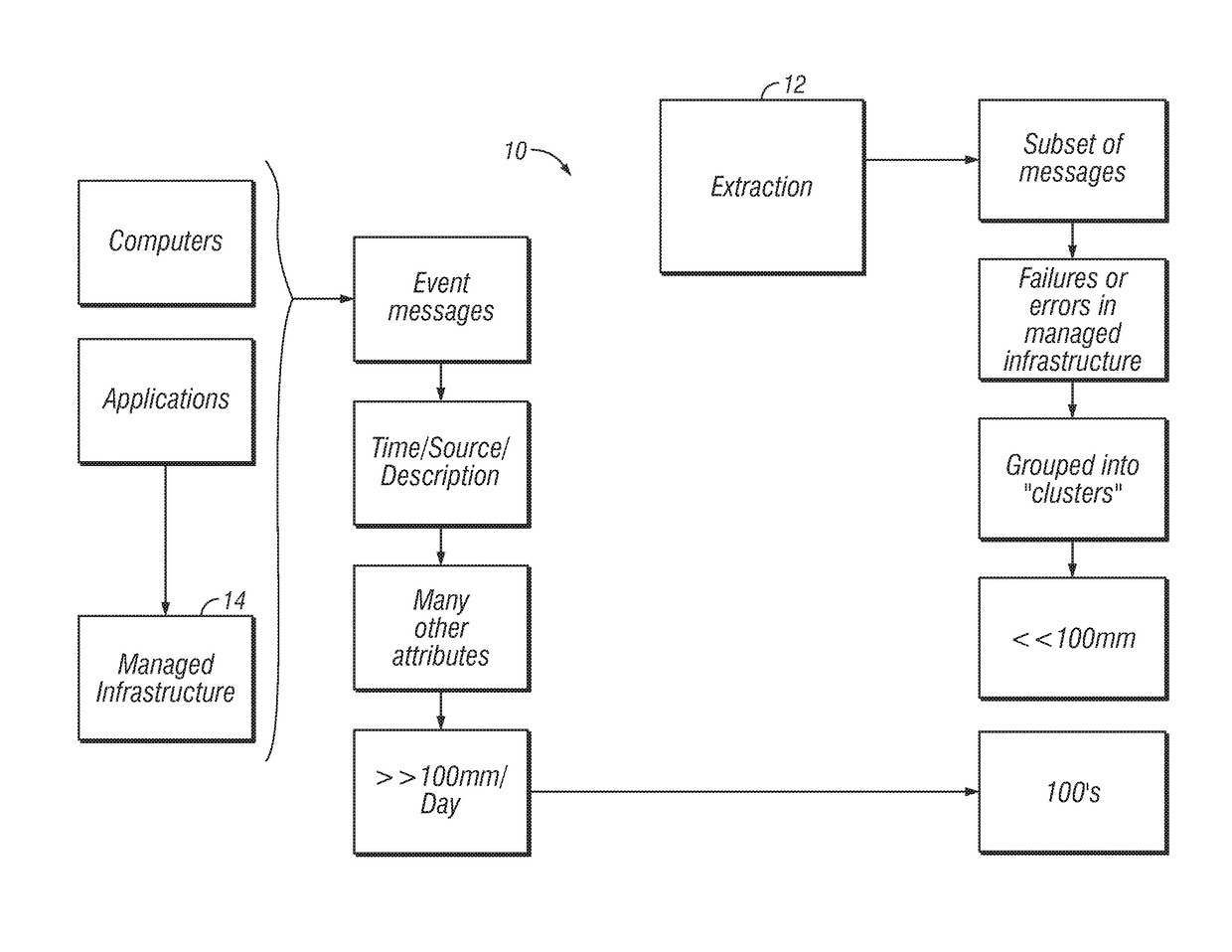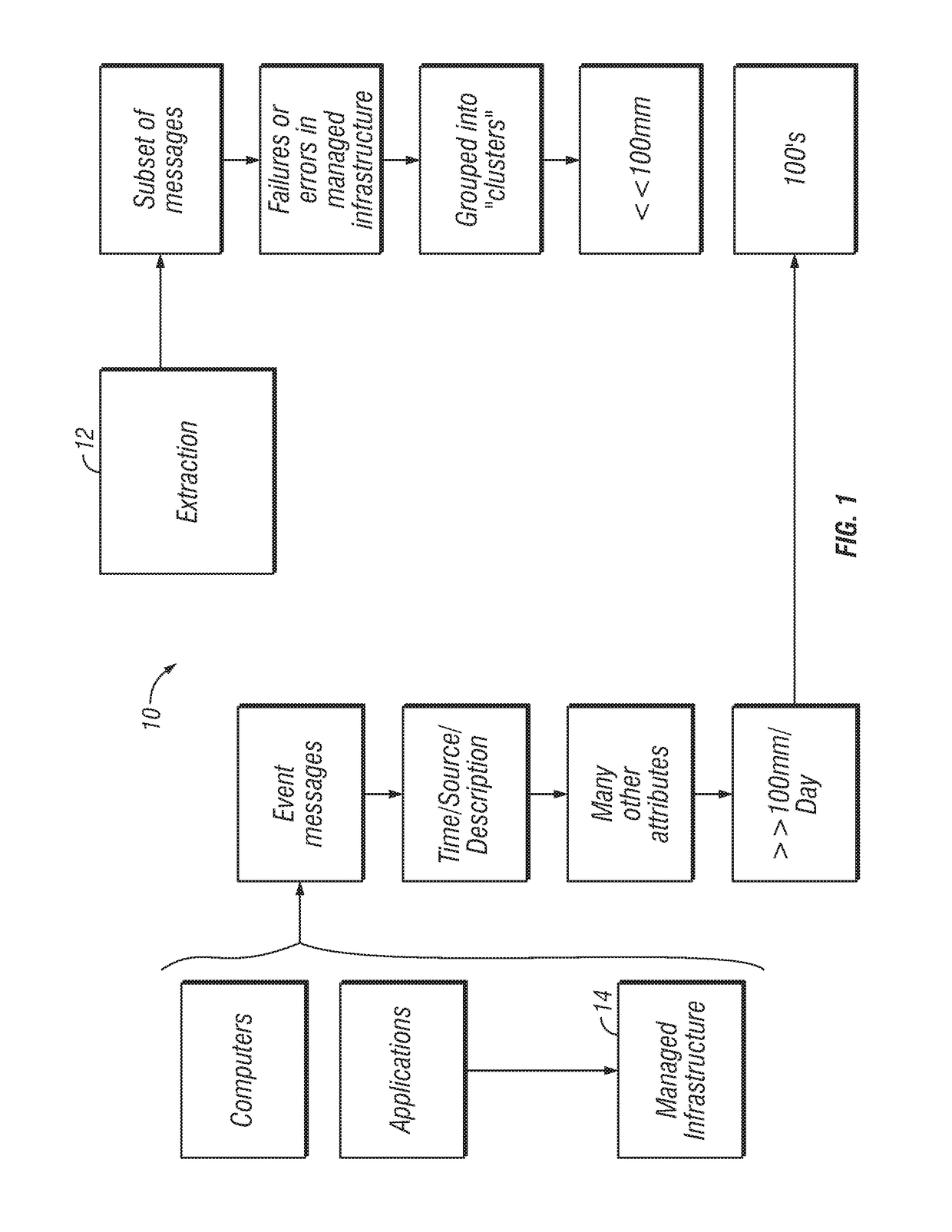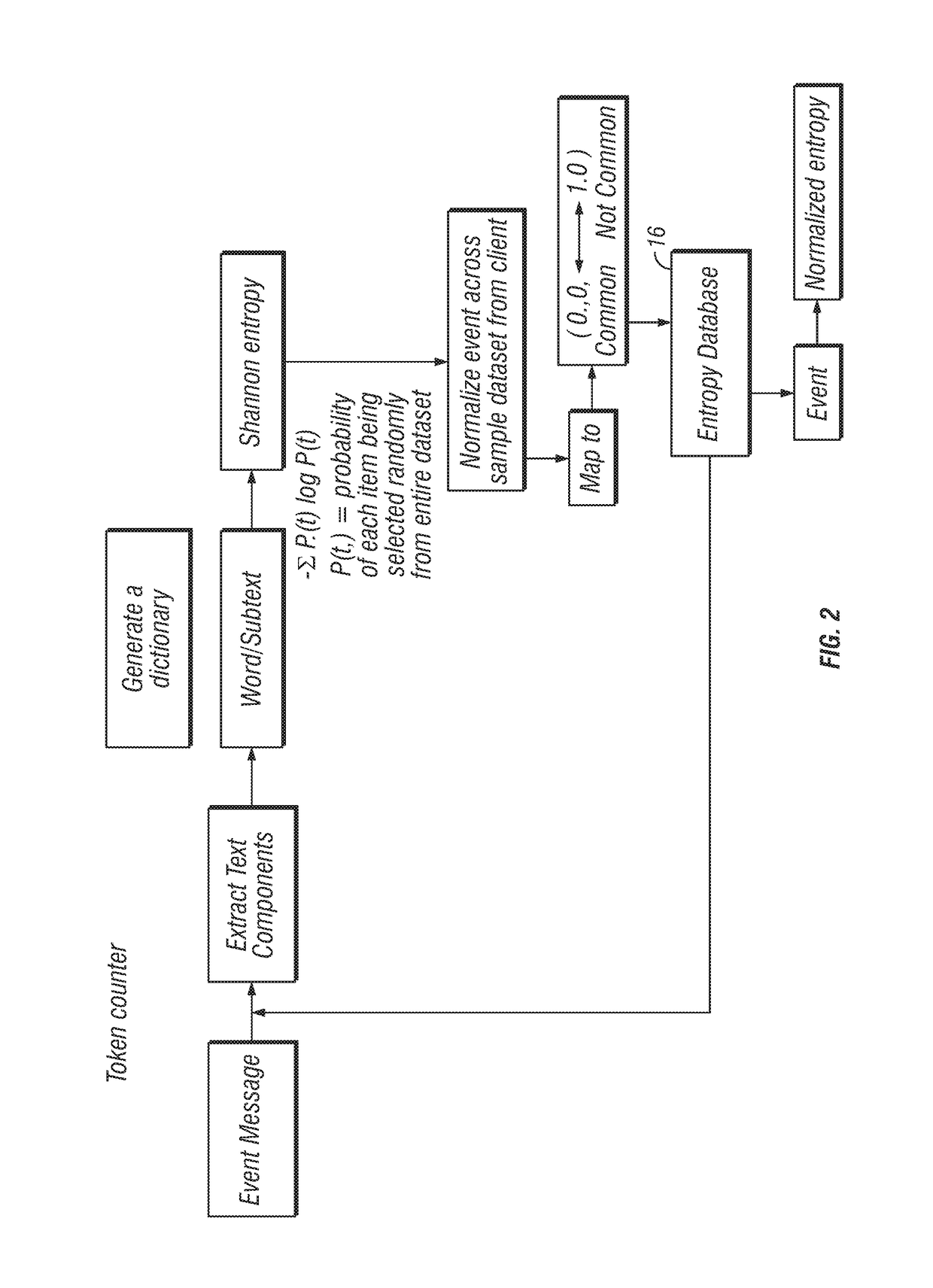System for decomposing events from managed infrastructures with situation room
- Summary
- Abstract
- Description
- Claims
- Application Information
AI Technical Summary
Benefits of technology
Problems solved by technology
Method used
Image
Examples
example 1
[0100]As a non-limiting example, the NMF algorithm can be executed as follows:
Let Mij by a n×p non-negative matrix, (i.e., with M>0, and k>0 an integer). Non-negative Matrix Factorization (NMF) consists in finding an approximation
X=WH(AB), (1)
where W, H are n k and k p non-negative matrices, respectively. In practice, the factorization rank r is often chosen such that r<
[0101]The main approach to NMF is to estimate matrices W and H as a local minimum: 1) M=AB
A, B seed randomly tentatively adjusts A, B until the Frobenius distance
∥M−AB∥ is minimized
where
D is a loss function that measures the quality of the approximation. Common loss functions are based on either the Frobenius distance or the Kullback-Leibler divergence. R is an optional regularization function, defined to enforce desirable properties on matrices W and H, such as smoothness or sparsity.
example 2
[0102]As a non-limiting example, a k-means algorithm is used as follows: Given a set of event vectors (x1, x2, . . . , xn), where each observation is a d-dimensional real vector, k-means clustering aims to partition the n observations into k sets (k≦n) S={S1, S2, . . . , Sk} so as to minimize the within-cluster sum of squares (WCSS):
argminS∑i=1k∑xj∈Sixj-μi2
where μi is the mean of points in Si.
[0103]In one embodiment of the situation room 18, as illustrated in FIG. 1, a system 110 is provided for creating, and displaying in a dashboard directed to the system 10 from clustering messages received from the infrastructure 14, also known as the dashboard system for the situation room 18.
[0104]In one embodiment, the situation room 18 has a display that can be interactive. The situation room 18 can be coupled to or includes a dashboard design system 112, display computer system 114, and a data system 116.
[0105]In one embodiment, the system includes dashboard converter logic 118, data range ...
PUM
 Login to View More
Login to View More Abstract
Description
Claims
Application Information
 Login to View More
Login to View More - R&D
- Intellectual Property
- Life Sciences
- Materials
- Tech Scout
- Unparalleled Data Quality
- Higher Quality Content
- 60% Fewer Hallucinations
Browse by: Latest US Patents, China's latest patents, Technical Efficacy Thesaurus, Application Domain, Technology Topic, Popular Technical Reports.
© 2025 PatSnap. All rights reserved.Legal|Privacy policy|Modern Slavery Act Transparency Statement|Sitemap|About US| Contact US: help@patsnap.com



